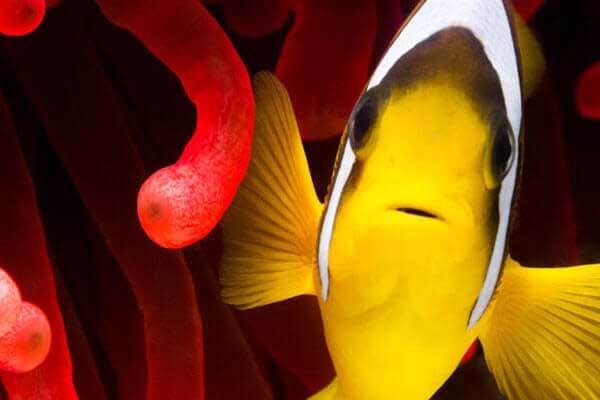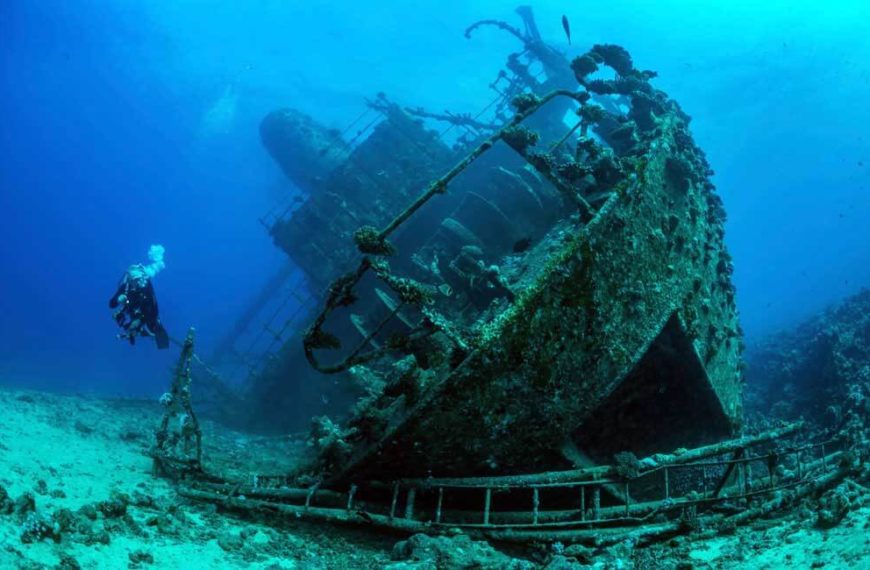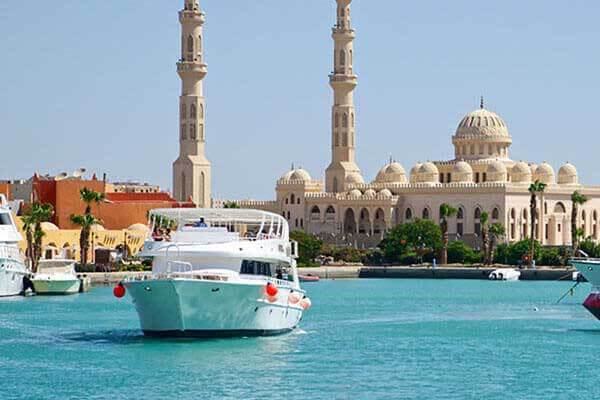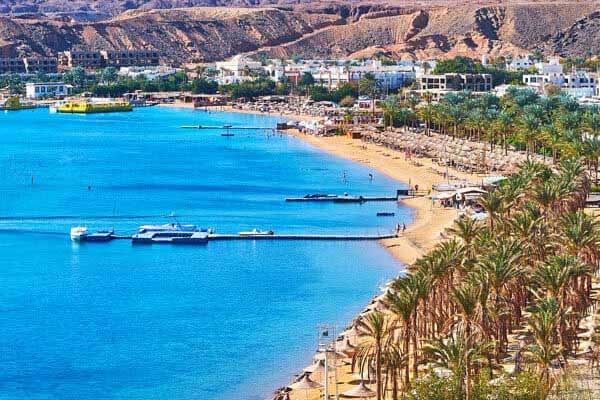
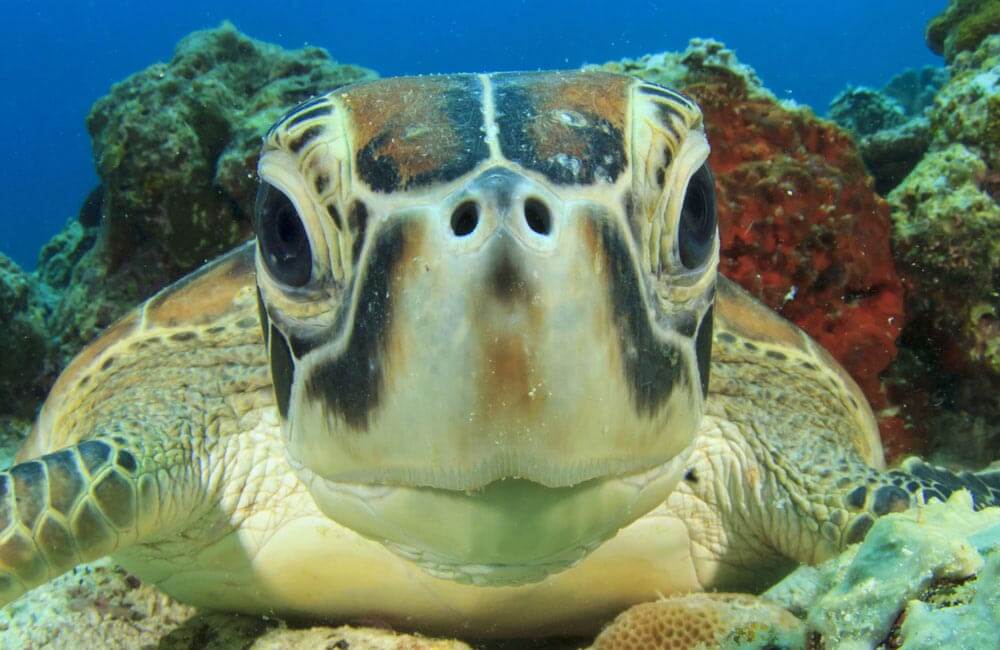
The Egyptian Red Sea is the most popular scuba diving destination for European divers. The clear blue waters, the reliable sunshine and a spectacular array of coral and critters make it a perfect destination for divers of all levels, just a five-hour flight from a vast number of European cities.
The Red Sea’s reefs were first brought to the public’s attention by Hans Hass and Jacques Cousteau during the 1950s, Although Egpyt only borders approximately a third of the Red Sea’s western shoreline, the country was much more accessible than the more southerly African nations of Sudan, Eritrea and Djibouti, and Saudia Arabia which extends along most of the Red Sea’s eastern shores.
Consequently, scuba diving tourism to Egypt began to grow from the pioneering days of the late 1960s, much of it concentrated around what are now the large resort towns of Sharm El Sheikh, at the tip of the Sinai Peninsula, and Hurghada, on the Egyptian mainland. Today, tourist destinations for the Egyptian Red Sea are found along the entirety of its coastline.

Geologically, the Red Sea runs along a deep-sea volcanic rift, the boundary between the African and Arabian tectonic plates. It extends for approximately 2,250km, with a maximum width of 355km and a maximum depth of just over 3km. It is connected to the Indian Ocean through the Gulf of Aden via a 20km-wide passage known as Bab El Mandab (Gate of Tears), and hence there is some species crossover between the Red Sea and the Indo-Pacific region. It is the world’s most northerly coral reef system, with more than 200 species of hard and soft coral found throughout its extent, together with more than 1,200 species of bony fish, at least 10 per cent of which are endemic.
Theories as to the reason behind the Red Sea’s name abound, with some claiming it is due to the presence of blooms of red algae, others suggesting it reflects the colour of the sunrise or sunset, but it may be due to a simple naming convention used by early map-makers, with the colour red used to depict the direction south.
EGYPT – FREQUENTLY ASKED QUESTIONS
How to get there
There is a huge range of direct flights to the main resorts of Hurghada and Sharm El Sheikh from across Europe. A limited number of direct flights to Marsa Alam are also available. Many flights are chartered by tour operators and will include transfers to your destination of choice, including resorts such as El Gouna, Safaga, El Quseir, Sahl Hasheesh and Dahab, which are not directly serviced by airports. Indirect flights are available with national carriers through Cairo. Independent travel is possible, and there are plenty of regular, inexpensive coach services from Cairo and between the resorts, but they are often very long, and not especially comfortable, nor suited to families. Booking a package deal for flights and hotel is the best and most convenient way of travelling to Egypt.
Is it safe?
Within the tourist resort areas, there is very little in the way of personal crime such as pickpocketing or bag-snatching. Valuables should not be left unattended, as is also the case anywhere else in the world. Outside the resorts, especially in larger cities such as Cairo and Alexandria, more caution should be taken.
Solo female travellers can be subjected to a lot of unwanted verbal harassment, even in the resorts. Physical assault is rare, but women should avoid travelling alone. Regardless of how offensive this might sound to western sensibilities, being accompanied by a male friend will eliminate most of the verbal harassment.
There have been a number of terrorism-related incidents in Egypt, as there have been throughout the world. Reports of sectarian violence are confined to a small area of northern Sinai, some 700km from the resort of Sharm El Sheikh. Security at the airports has been dramatically increased since the 2015 Russian Airline disaster, there are security checkpoints at the city limits and on the roads in between, and the tourist police have a strong presence throughout the resorts. Terrorism is a global threat, and not confined to the middle-east.
Will I have a problem at immigration if I have previously visited Israel?
No. This is a commonly held misconception. Although some middle-eastern nations continue to prohibit entry for tourists who hold Israeli passports, or who have an Israeli entry stamp within the pages, Egypt is not among them. Since 2013, Israeli immigration officials have issued visitor stamps on a separate entry card, for tourists who might plan to travel to those countries.
When is the best time to dive?
Diving is year-round and always good, but the best time is between mid-July and early November when the sea is at its warmest. Between January and March the water temperature can drop to between 18° and 22°C depending on how far north and south you are, and warm clothing is essential during the evenings and when you are out at sea. High season is mid-September to mid-October and it can get very busy during this time of year.
How do I find the right dive centre?
Many package holidays are affiliated with a preferred dive centre, which will have been thoroughly vetted by the tour company. First-time visitors who have not booked diving through the tour operator in advance can’t go wrong with picking one of the big-name operators, some of whom have been operating for over 30 years. There are a number of excellent, smaller operators that also have a wealth of experience and can provide a more personalised service. There are so many dive centres spread across the country that it’s difficult to suggest one without being unfair to another, however research through Internet forums can provide some good advice.
Diving is regulated by the Chamber of Diving and Watersports (CDWS). If you are at all uncertain about a dive centre, or it seems like it is making a deal which sounds ‘too good to be true’, you can check the CDWS blacklist for those who fail to comply to regulations.
EGYPT – ABOVE THE SURFACE
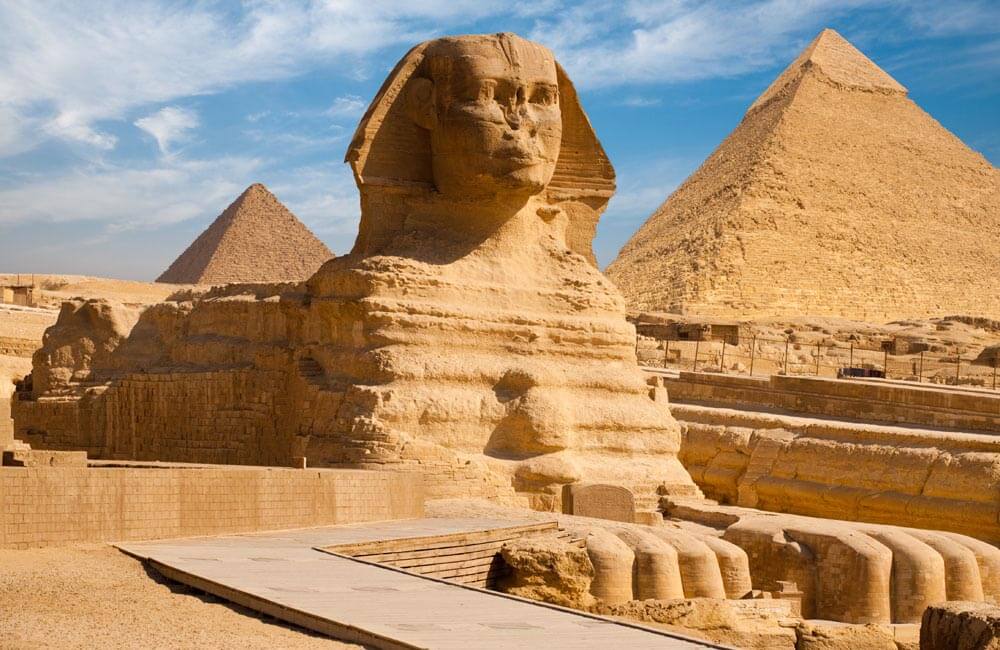
Guided tours of ancient Egypt’s cultural heritage are among the many other things to do outside diving
If you wish to take a break from diving and visit the Pyramids, Luxor, St. Katherine’ Monastery, or perhaps Petra and Wadi Rum in Jordan, the best option is to book yourself on a package tour, either through the hotel or an approved local operator. Do not be tempted by cheaper roadside touts, who will more than likely offer a poor service and be uninsured. Independent travel is possible, but Egyptians have perfected the art of the package tour to a tee. Official paperwork is mostly prepared in advance, meaning tourists can be fast-tracked through security checkpoints, and the guides will deliver everything you need to see with a minimum of hassle.
Plenty of other activities are available, including quad biking and horse riding in the desert, windsurfing and kitesurfing (especially in Dahab). If you feel you have to ride a camel, leave ample room for showering before dinner!
EGYPT – NEED TO KNOW
Weather
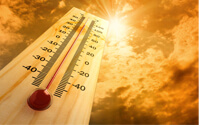
Temperatures vary a couple of degrees between north and south. The hottest months are July and August, where the maximum temperature averages around 35°C but can easily push 40. Mid-December mid-March averages 20°C degrees during the day but can drop to 10°C at night. Long trousers and light fleeces are essential, especially out on the boats. Sea temperature lags a little with the warmest months being August and September, where the sea temperature can reach 30°C, with an average of 27/28°C between June and November. Sea temperature is coldest during January – April, dropping as low as 18°C in Dahab, or around 22°C in Hurghada and the south.
Visas

Visas can be purchased on arrival for $25, but you probably won’t get any change if you hand over £25 or €25. Debit and credit cards are not accepted. You can purchase an e-Visa in advance from visa2egypt.gov.eg but leave at least seven days in advance for processing. Visitors flying into Sharm can get a free entry stamp on arrival, which is valid for 14 days, for travel from the southern edge of Sharm city to the Israeli border, including St Katherine’s Monastery, Dahab, Nuweiba and Taba. The free entry stamp does NOT cover Ras Mohammed and anything further south such as Thistlegorm and Dunraven trips. Passports will be checked for all trips leaving the visa-free zone, and passengers will not be permitted on board – or asked to leave the boat – if they do not have a visa. Purchase of a visa on arrival is highly recommended.
Phones and Internet

You can buy 3G and 4G SIM cards with phone and data access from an outlet for one of the main providers (Orange, Etisalat and Vodaphone), which you can find in shopping centres throughout the resorts. You will need a passport and cash payment, and the staff will register it on your behalf. Alternatively, pre-paid 4G data SIM cards can be purchased on arrival at the airports, which is very convenient, but more expensive. The country code is +20 and the tourist police emergency helpline is 126 from an Egyptian telephone. Internet access is widely available throughout the resorts (if not at top speed), and most bars, cafés and restaurants offer free Wi-Fi access to paying customers.
Transport

Pre-booked packages will include airport transfers to your hotel or liveaboard. Within the resorts, the easiest way to get around is by taxi. Most hotels will offer a taxi or shuttle service to popular locations, which is very convenient, but more expensive than flagging down a taxi on the street. Taxi drivers are notorious for over-charging. Ask at hotel reception what the usual fee is (probably still more than it should be), and negotiate the taxi driver down to that. It’s worth negotiating repeat business from drivers who provide a good service at a reasonable price. There are regular local minibuses which are cheaper (ask at the hotel reception), but having prior knowledge of the area is recommended. Coach services between the resorts and Cairo are available and inexpensive, but the journey by road is long (seven hours Cairo – Sharm), and not always comfortable.
Language
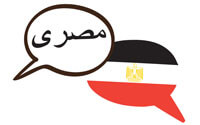
The spoken tongue is Egyptian Arabic and it’s always worth learning a few words. The native name for the country is ‘Misr’ – pronounced ‘Masri’, also ‘please’ (Lau Samat), ‘thank you’ (Shokran), ‘no, thank you’ (La’a Shokran – you will use this a lot!) and ‘mish mumkin’, which means ‘not possible’, and is useful for haggling. Egyptians have an amazing propensity for foreign language mastery and you will find plenty of people who can speak fluent English, German and Russian.
Money

Currency is the Egyptian Pound, also called LE, pronounced ghi-NEE in Arabic, further subdivided into 100 Piastres (Pt). Banknotes are available in denominations of LE200, 100, 50, 20, 10, 5 and LE1, and also 50pt and 25pt. Coins are also used for 25pt, 50pt and LE1. The 50 and 25 piastre notes are often confused by tourists for their 50 and 25LE counterparts. Check what you’re using to prevent offence, and it’s not unheard of for unscrupulous vendors to hand out the smaller notes in change. As of January 2020, £1 is approximately 21 Egyptian pounds. Prices in bars and restaurants can vary dramatically, but you can get a good meal and a drink at an inexpensive restaurant for around LE75. Dollars and Euros are widely accepted, with change given in LE. Credit and debit cards are also widely accepted, and there are plenty of ATMs throughout the resorts.
Tipping

Tipping has become a way of life in Egyptian resorts. How much is always a subject for discussion, but a few small notes can go a long way. 20LE can buy dinner and a coffee in a ‘local’ eatery, so if your meal costs 75LE, leave the change, add 5 or 10 LE to your taxi fare, and give the hotel porters 20LE for carrying your bags to the room. Tipping the boat crew or the hotel staff 200LE at the end of your vacation is only £10 in English money, but equivalent to a week’s wages for some of the workers.
Haggling

Is part of Egyptian life. Haggle away at any of the tourist bazaars and markets, and start with at least half of the asking price. Keep it jovial, don’t get surly, use some local lingo, and only get involved if you want to actually buy the product. Don’t try to haggle in regular shops.
Health

Vaccinations against typhoid and hepatitis A are recommended for travel to Egypt. There is no risk of yellow fever in Egypt, but travellers who have previously travelled through at-risk countries will be required to show a certificate of vaccination. Medical centres and hospitals are within easy reach of the tourist centres, and there are at least 12 hyperbaric chambers available to divers. Pharmacies can provide over-the-counter medication (such as antibiotics) which are not available without a prescription in other countries. The most common medical complaint in Egypt is ‘the Pharaoh’s Revenge’, and all pharmacists are well stocked with anti-diarrhoea medication.
Electricity

The electricity supply is 220V/50Hz which is compatible with most UK and European devices. Plug sockets are type C and F, the rounded two pin style found around much of Europe. (The picture to the left shows a type C plug in a type F socket)


